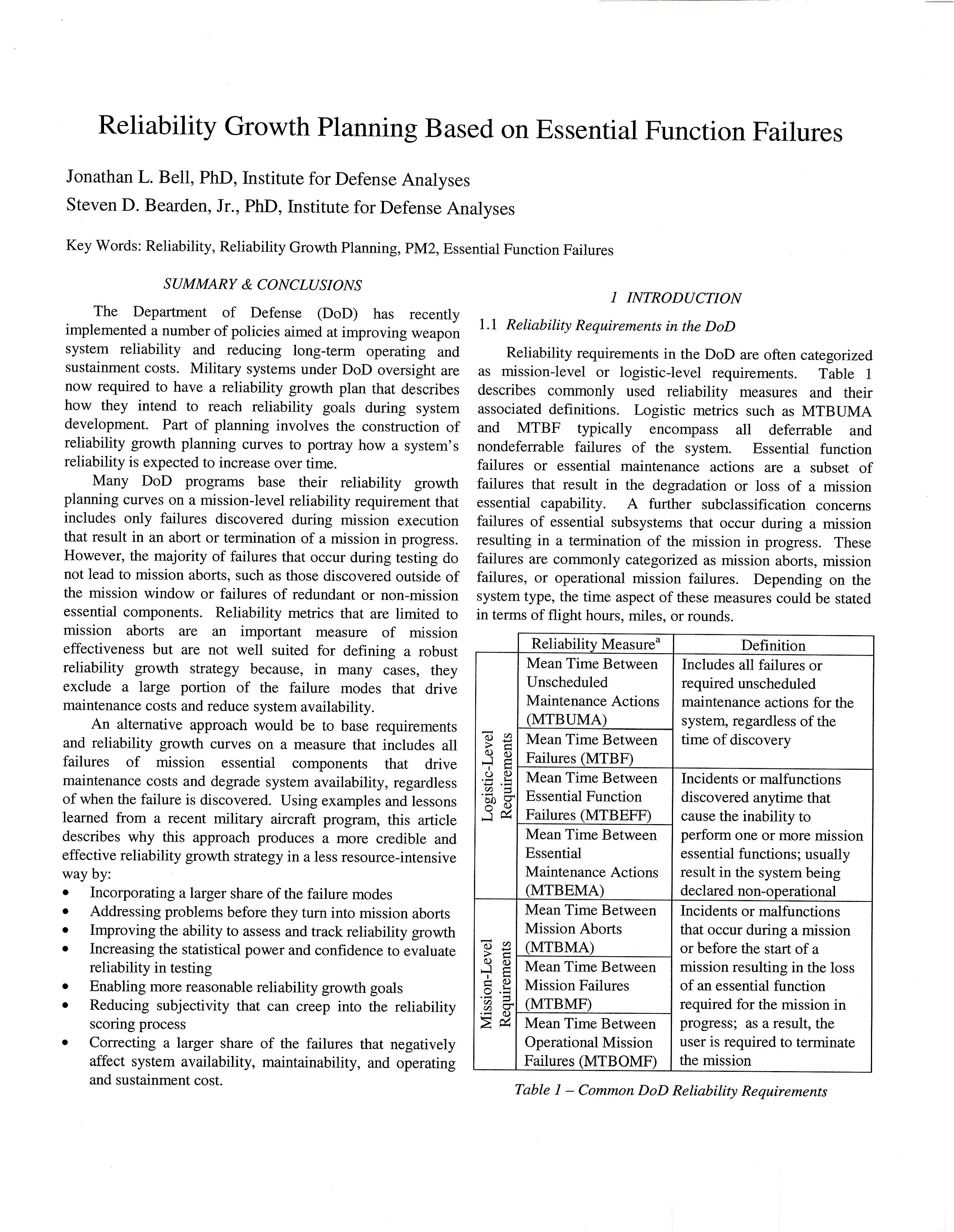The Department of Defense (DoD) has recently implemented a number of policies aimed at improving weapon system reliability and reducing long-term operating and sustainment costs. Military systems developed within the DoD acquisition process are now required to have a reliability growth plan that describes how they intend to reach reliability goals during system development. Part of planning involves the construction of reliability growth planning curves to portray how a system's reliability is expected to increase over time. Many DoD programs base their reliability growth planning curves on a mission-level reliability requirement that includes only failures discovered during mission execution that result in an abort or termination of a mission in progress. However, the majority of failures that occur during testing do not lead to mission aborts, such as those discovered outside of the mission window or failures of redundant or non-mission essential components. Reliability metrics that are limited to mission aborts are an important measure of mission effectiveness but are not well suited for defining a robust reliability growth strategy because, in many cases, they exclude a large portion of the failure modes that drive maintenance costs and reduce system availability. An alternative approach would be to base requirements and reliability growth curves on a measure that includes all failures of mission essential components that drive maintenance costs and degrade system availability, regardless of when the failure is discovered. Using examples and lessons learned from a recent military aircraft program, this article describes why this approach produces a more credible and effective reliability growth strategy in a less resource-intensive way by: 1) Incorporating a larger share of the failure modes 2) Addressing problems before they turn into mission aborts 3) Improving the ability to assess and track reliability growth 4) Increasing the statistical power and confidence to evaluate reliability in testing 5) Enabling more reasonable reliability growth goals 6) Reducing subjectivity that can creep into the reliability scoring process 7) Correcting a larger share of the failures that negatively affect system availability, maintainability, and operating and sustainment cost.

